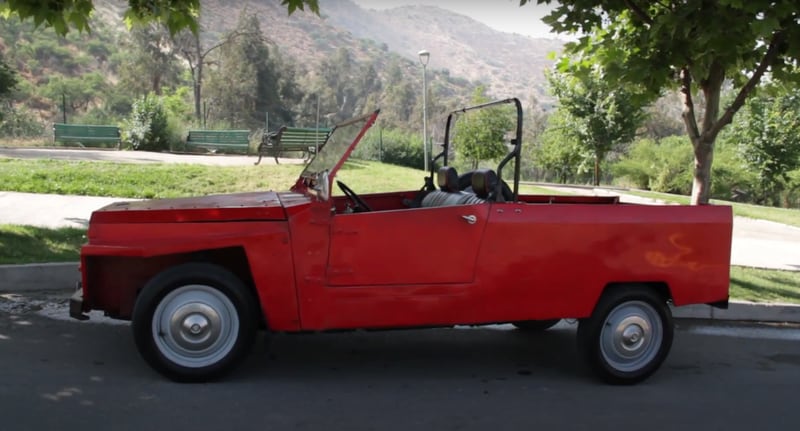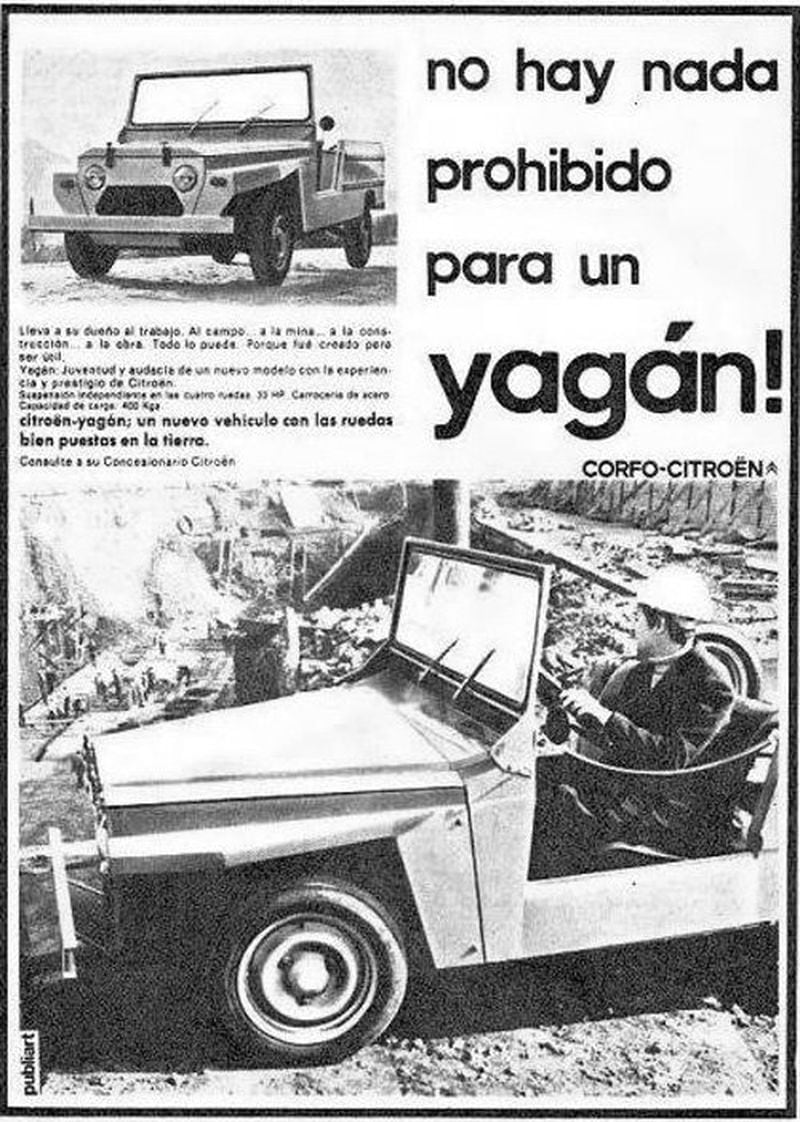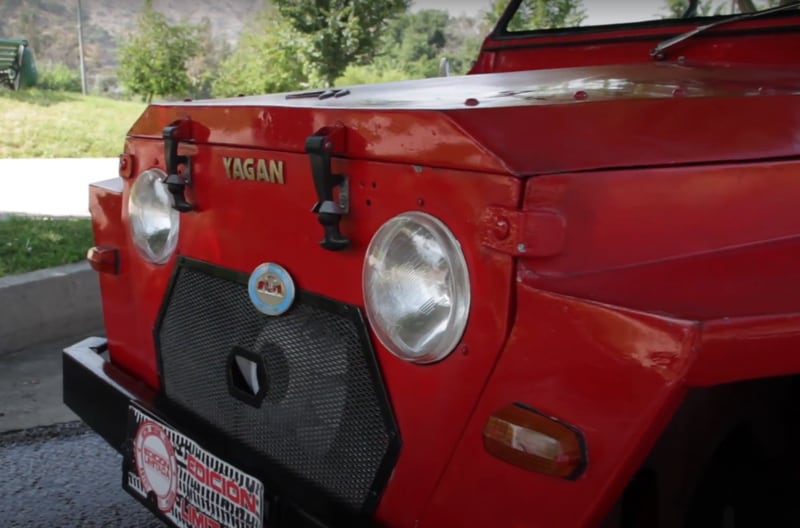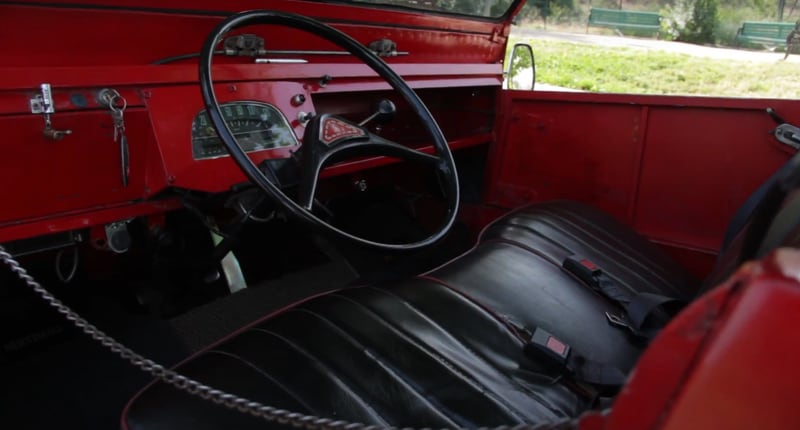More than 50 years ago, the Yagán was born, a model developed by Citroën Chile at the request of President Salvador Allende. Today it can be seen in an exhibition at the La Moneda Cultural Center.
A little over half a century ago, Chile took its first (and only) step towards creating a vehicle on national territory.
The new government of President Salvador Allend In 1970, he wanted to advance industrialization and to do this, he asked the Minister of Economy at the time, Pedro Vuskovic, to develop an economical car to satisfy the needs of the population.
At that time, the vehicle fleet was very different from today. The majority of vehicles sold in the country in the early 1970s were imported units priced high due to high customs duties. The other alternative was that of automobiles assembled in factories established since the mid-1950s, mainly in Arica.

To increase a very limited motorization rate, Allende and Vuskovic came to the conclusion that they needed to build a popular, low-cost car, with a ceiling of $250 at the time.
The idea of Yagan
The company chosen for the Chilean automobile project was Citroën Chile. The French company indicated that the option was viable, so a consortium was then formed between Citroën and the Chilean Development Corporation (Corfo) to bring the project to life.
One of the options proposed by the company to the rafters was to make a sort of replica of the Méhari, which would have an engine made in Argentina with bodywork from Uruguay. However, this plan did not fit the budget, it exceeded the cost by two or three times, so the idea had to be adjusted, maintaining only the importation of the propellant that equipped the 2CV, the same as that of the Citroneta. For the rest, it would have to be found and built in Chile.

This is how the idea of Yagán was born, a name that came to the mind of journalist and writer Guillermo Blanco, in honor of the canoe town in the far south.
The vehicle was characterized by straight lines and lacked side doors. It was the Chilean version of what was known in other markets as the Citroën FAF (Easy to Make, Easy to Finance)
“We designed it for all uses. We wanted it to look like a Jeep, but it didn’t, we wanted it to look like a car, but it wasn’t either. We started designing other types of things so that their use wasn’t so restrictive and it was broadened. “And some put a body on it, others put a hood, others left it outside,” recalls Cristián Lyon, former sales director of Citroën at the time, in the documentary. “In the footsteps of Yagan” directed by Patricio Díaz and Enrique León.

Advertising at the time was clear in its message: “There is nothing forbidden for a Yagan!” » He takes his owner to work. In the field… in the mine… in the construction… at work. Whatever you can. Because it was created to be useful. Yagán: Youth and audacity of a new model with the experience of Citroën”, that was the message.
The Yagán, although it had the transmission of a Citroneta, as well as the front shifter, was a literally hand-built product with straight lines and a metal body.
There were no side doors and a chain was installed so people could stand up. It was powered by a 602 cc air-cooled engine producing 33 horsepower. This engine was the same one that had debuted in 1970 in Chile in the AX-330, an Argentinian vehicle, paired with a four-speed manual gearbox.
The first units arrived on the Arica market in 1972, with independent suspension and a load capacity of 400 kg.
As the newspaper La Prensa Austral points out, the production of Yagán was “limited to the sole possibility of having bending machines to cut the plates, then assemble and square the pieces practically by hand, which had a negative impact on efficiency “. .of the production process. The above explains its absolutely rectilinear design, the reason for harsh criticism and even ridicule, as well as the claim that no two Yaganes are the same.

After the fall of the Popular Unity government, production of Yagán ceased. With the emergence of the dictatorship, the project ended, although there was committed production that was monopolized by the military for use in northern border patrols. The units were also used in extreme tests, such as airdrops from Hercules planes, which obviously led to the destruction of the vehicles. In 1974, production stopped definitively.
In total, according to the press, nearly fifteen hundred units were built, some of which are still in good condition and require a circulation permit of nearly $25,000.
Two years ago, the show 31 Minutos included the Citroën Yagán in the episodes “The Silurian Threat I” and “The Time Machine”, where the characters Guaripolo and Bodoque drove this model designed and built in Chile.
It should be noted that one of the filmmakers of 31 Minutos, Patricio Díaz, was the one who co-directed the documentary “The Yagán Footprint”, which we talked about previously, so he was well aware of the history of the vehicle.
Now, if anyone wants to see a Citroën Yagán in person, the exhibition “How to design a revolution », which is exhibited at the La Moneda Cultural Center and which shows the graphic and industrial design carried out under the Allende government, has a unit of the model in perfect condition.
The exhibition will be open until January 28, 2024, with tours Tuesday to Sunday, 10:00 a.m. to 7:00 p.m.
Source: Latercera
I am Robert Harris and I specialize in news media. My experience has been focused on sports journalism, particularly within the Rugby sector. I have written for various news websites in the past and currently work as an author for Athletistic, covering all things related to Rugby news.


